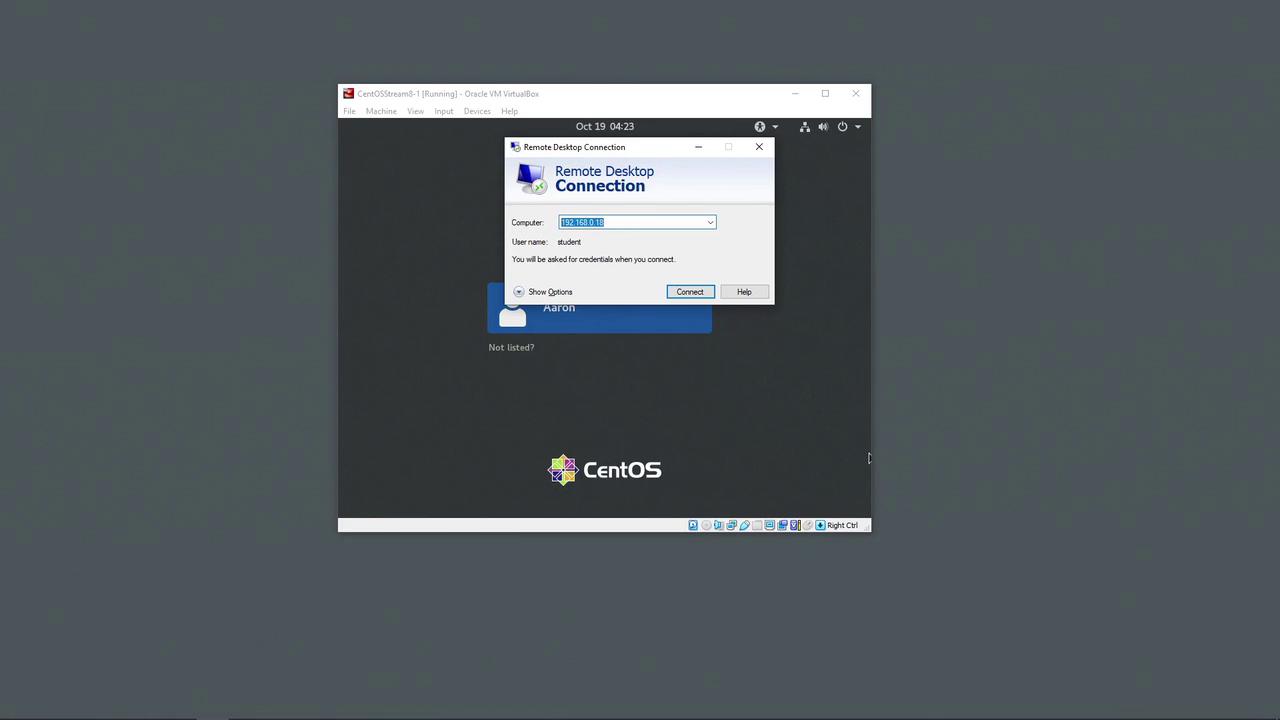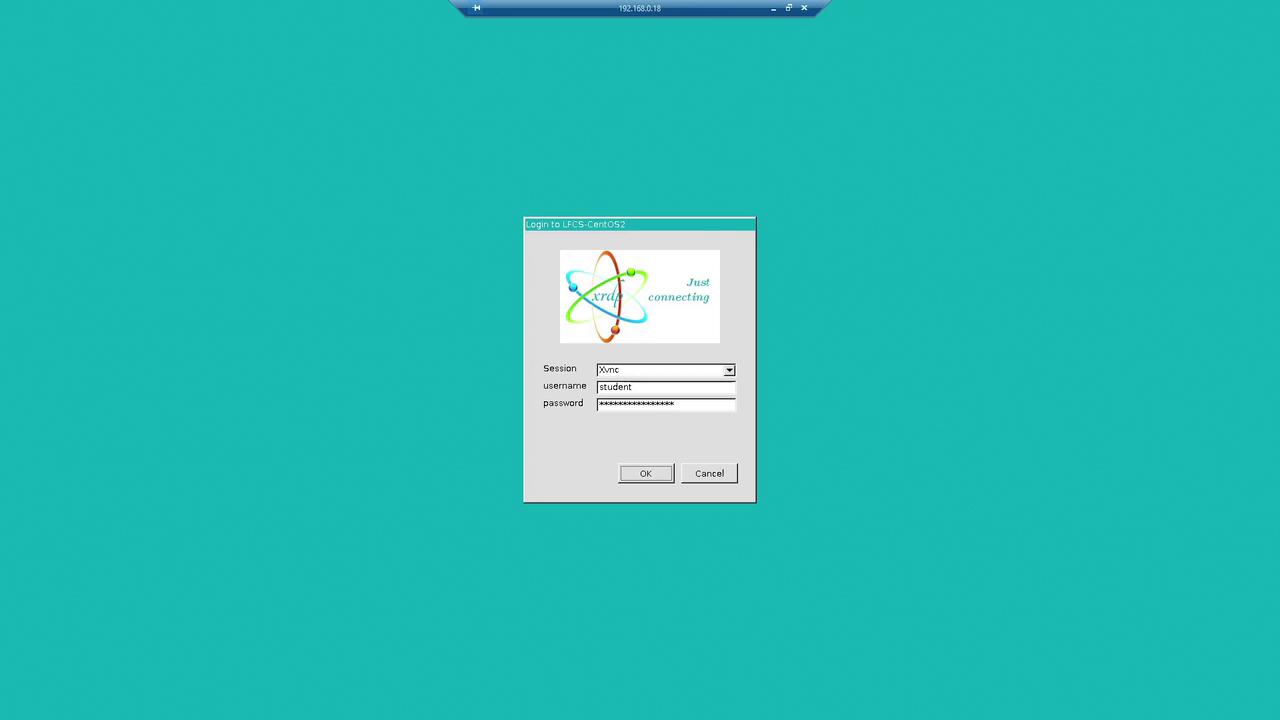Red Hat Certified System Administrator(RHCSA)
Understand and Use Essential Tools
Demo Access a shell prompt and issue commands with correct syntax
Welcome to this comprehensive guide on logging into Linux machines using various methods. In this lesson, we will cover three distinct approaches for accessing a Linux environment:
- Graphical login on a local machine.
- Graphical remote login via RDP.
- Text-based login using SSH.
Graphical Login on a Local Machine
In this section, we use a CentOS virtual machine (VM) that is already booted and configured with a graphical interface. To log in, follow these steps:
- On the login screen, select your username.
- Enter your password, then click Sign In.
After a brief moment, the default GNOME desktop environment will load, similar to the login you experience on your personal computer. Once your session begins, you can log out when ready to proceed to the next method.
Graphical Remote Login via RDP
In this part, we demonstrate remote access via Windows Remote Desktop (RDP). A dedicated VM is configured to accept RDP connections. To establish a remote login session, perform the following:
- Open your Remote Desktop connection tool.
- Enter the target IP address (pre-filled for demonstration) and click Connect.

A login screen appears, pre-populated with the username "student." Type the corresponding password and click OK. The remote graphical session will then commence, displaying the machine's IP address at the top of the window.

Within the session, navigate to the Activities menu and select the GNOME Terminal to launch a virtual terminal emulator.
Text Mode Login via SSH
From the GNOME Terminal session, where you are logged in as "student" on LFCS-CentOS2, initiate an SSH connection to another machine with the following command:
[student@LFCS-Centos2 ~]$ ssh [email protected]
After executing the command, you will be prompted for the password associated with the user "aaron." Note that as you type, no characters will display on the screen. Once you press Enter and the password is authenticated, you should see a confirmation message similar to:
[email protected]'s password:
Activate the web console with: systemctl enable --now cockpit.socket
Last login: Tue Oct 19 04:22:38 2021
[aaron@LFCS-CentOS7 ~]$
This output confirms your successful login to the remote machine. To exit the SSH session and return to your "student" session on LFCS-CentOS2, type:
[aaron@LFCS-CentOS7 ~]$ exit
After closing the terminal emulator, be sure to log out of your session to complete the process.
Note
For more detailed guidance on SSH configurations and management, refer to the OpenSSH documentation.
This concludes our lesson on accessing a shell prompt and issuing commands with the correct syntax. Thank you for following along, and we look forward to guiding you in our next session.
For further reading and additional resources, check out:
Watch Video
Watch video content